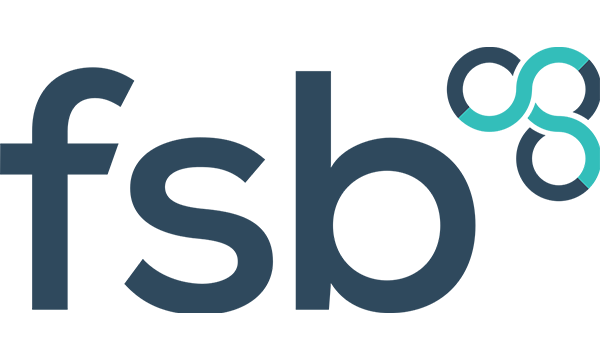
In this week's exclusive column, Councillor Paul Miller explores the challenges and opportunities facing rural communities when it comes to digital connectivity.
Our new Prime Minister said this week that every household in the UK should have access to a Full Fibre Broadband Connection by 2025. I completely agree with him.
The issue though, is the scale of the challenge facing those of us trying to provide it. When I arrived behind the Economic Development desk in Pembrokeshire I quickly realised that there weren’t many things I could do, that would have as big an impact on the Pembrokeshire Economy, as dramatically improving Pembrokeshire’s Digital Connectivity. I also realized that it was just too important to rely on someone else doing it for us.
Sitting on the very western tip of Wales it is obvious to anyone that we’re never going to be the best connected county in terms of road or rail – we accept that.
We could, however, be the best digitally connected place in Wales, maybe even the UK. That’s our ambition.
In Pembrokeshire right now 88% of households and businesses have access to 30mbps (the EU’s definition of Superfast). That not terrible, actually, by UK standards but fewer than 6% of premises have access to Ultrafast (100 mbps) and 2.5% of our households are still stuck with less than 2mbps. The story in a nutshell? If you’re in a town or big village, broadband speeds are, for the most part, bearable but perhaps not for long. Just outside, you’re probably pulling your hair out.
The economics of rural broadband mean that without intervention, providers aren’t going be doing much to improve that position anytime soon. Our challenge then, is how we intervene in a way that actually starts to fix the problem and in Pembrokeshire we’ve come up with a plan that we’re convinced we can make a difference.
Step one: We’re going to intervene where we can do so easily.
We’ve applied for funding under the Department for Culture Media and Sport’s (DCMS) Local Full Fibre Networks Programme (LFFN). We know the outcome of that application, but I can’t tell you yet. Let’s assume for a second, though, that we’ll be successful. That funding enables us, by 2021, to connect up a large number of public sector buildings (GP’s Surgeries, Libraries, Leisure Centres) to full fibre broadband and it creates a great base from which suppliers will make full fibre connections available to the homes and businesses nearby.
Step 2: We’ve divided the county into eighty, loosely defined, project areas that cover the whole of Pembrokeshire
We’ve invited providers to give us an indicative price to connect every property in those areas to full fibre; we’ve had some big numbers back, but, based on what we’ve seen so far, we believe it can be done.
Step 3: We’ve employed a team, funded by the Council, specifically to work with communities in those zones to draw down as many funding vouchers as possible.
Vouchers are a UK and Welsh Government Initiative that provide funding of up to £1,500 per household and £5,500 per business to support the build of Fibre Infrastructure.
Step 4 : Cabinet will soon be considering a proposal to create a £2m pot of Council funding to top-up the voucher money where it isn’t enough to complete a zone.
£2m won’t be enough, but it’s a start. If the Prime Minister really wants to deliver by 2025, we’ll be looking to him for more.
On top of that direct intervention, I’m determined that we do everything in our power as a local authority to ‘get out of the way’ as we seek to have fibre provided across the County. Our Property team have been tasked with ensuring we never refuse permission to broadband providers to use our land. Our Highways team are exploring innovative ways of using the highways and footpaths crisscrossing Pembrokeshire to bring fibre cables to people’s front doors and our Planning team are working out how we best ensure that all new development in Pembrokeshire incorporates a direct fibre connection.
This is a big undertaking, it’s going to require commitment from all levels of government but it can be done!
Today, I’m making a start on getting the message out there – We are absolutely determined to deliver a step-change in digital connectivity in Pembrokeshire. I want Pembrokeshire residents to know we’re on the case. I want government to know that we’re ready to get stuck in. I want business in Pembrokeshire to know that we’re determined to get them better connected. And perhaps most importantly, I want businesses all over the UK to know, that there’s a dynamic, forward-thinking county on the tip of West Wales that’s getting itself connected and that’s open for business.


More About Cllr. Paul Miller
Cllr Paul Miller is Pembrokeshire County Council’s Cabinet Member for Economy, Tourism, Leisure and Culture and Labour Group Leader.
The County’s regeneration programme is a bold agenda for change that is shifting ambition and resources towards the economic development and renewal that Pembrokeshire needs. Paul’s vision sees Pembrokeshire capitalise on its outstanding natural beauty and quality of life while also ensuring that there is the infrastructure and economic platform in place to attract inward investment, jobs and talent to the County.
Paul is bold in his desire to see Pembrokeshire become ‘the best digitally-connected, most dynamic, forward-thinking and commercially successful rural County in the UK.’








